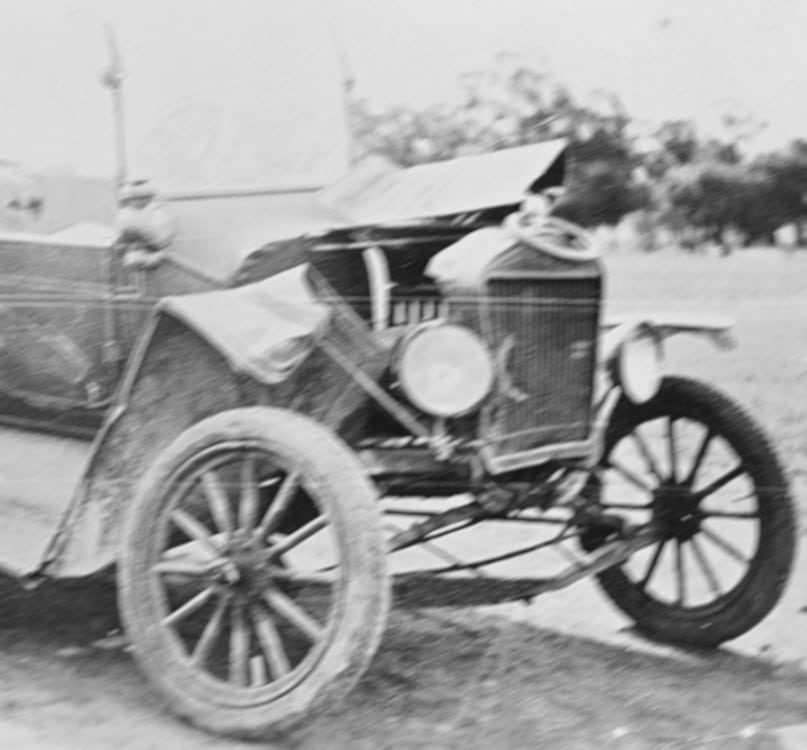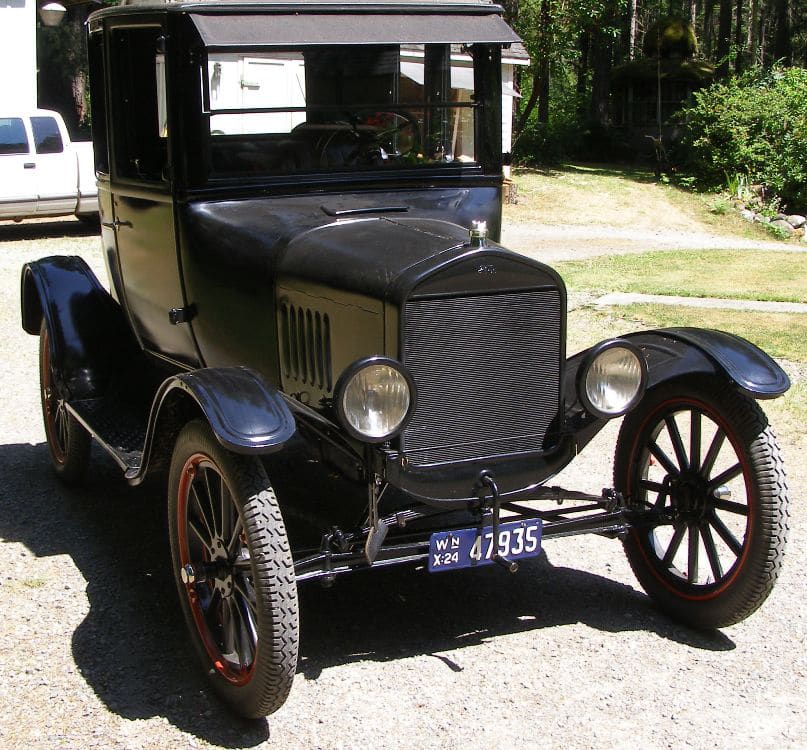Arts & Entertainment Community
Gig Harbor Now and Then | Stop signs didn’t always look like this
Editor’s Note: (It’s not really from the editor, but we’re hoping he’ll play along.)
Most of the time it’s not that difficult to come up with an introductory line to a story, or in this case, a column. You already know what the topic is going to be, and usually have a pretty good idea of the direction from which you’re going to approach it. But there can be times (mercifully rare) when an opening line is stubbornly difficult to create. When that happens, it’s usually because the topic is lousy.
An inferior opening line is a pretty good sign that the piece can’t be saved. In such a case it’s best to junk the idea and move on to something worthwhile. If you don’t, and the problem persists from first draft to publication, there’s a good chance the reader will smell it for the crummy piece of garbage that it is.
Often times a weak opening line will be obvious, but sometimes it can be a little tricky to spot. For example, a story that begins with, “Did you ever wonder …” could go either way. It could shine or it could stink. Overall, it’s a pretty weak opening.
But if it starts out, “Didja ever wonder …” the fake, lame folksiness is a dead giveaway to the impending foul odor.
Didja ever wonder what a newspaper, magazine, or online article or column looks like when it’s turned over to the editor for review?
Using that same, old, ridiculous excuse of “because it happened before today, it’s history” to justify using this topic in a history column, we’re going to demonstrate the effectiveness of editing a column between creation and publication. Why? Because it happened before today, so it’s history. (Didja notice that I added the word “so” to make the phrase sound fresh the second time in the same paragraph?)
But the main reason we’re going to talk about editing is because this is National Don’t Bitch About the Editor Day, the one day of the year when columnists grit their remaining teeth and try not to say anything disparaging about the editors who control their access to the public. With all that restraint being difficult enough, it’s merely optional to say something nice about an editor. This year, I choose to exercise that option. I don’t know if that’s the right choice, but I’m pretty sure I’ll soon find out.
A hard-working editor
This is the part where I’m supposed to say that the editor works hard, putting in long hours to see that the product printed on the paper or posted to the website is as good as it can possibly be. But to be completely truthful, I have no idea what an editor does.
You might think it would be an easy thing to simply go to the Gig Harbor Now corporate headquarters and observe one in action, but I’ve been contributing my tripe to this publication for over a year now, and they still haven’t told me where the corporate headquarters are.
That must be part of the probation period — don’t give away the address until the kid proves himself. I can understand that. It’s probably similar to being in quarantine: an attempt to keep the staff from becoming infected.
I hope the editor does work long, hard hours, because I know I do. Spitting out a thousand words of (mostly) benign filler every other week isn’t exactly a walk in the park, you know. Two-fingered typing can really take a toll on a guy.
The only way I can explain to others what the editor does is to show an example of a Before and After column, because that’s all I know.
Before editing
The following example of Before and After editing is drawn from a previous column (only because it’s easier than coming up with something new; it’s the old maxim “why waste the effort?” at play). It’s the one about automobile crank-starting injuries. This is how the beginning of the column looked when I sent it to the editor for publication, already highly polished and ready to go:
Gig Harbor Now and Then’s last quest of nearby history concerned a list of injured, most brokley or dislactated bones in the arm or trist, from the 1920s to the 1840s. The three big dudes given was that accidents happen to more far men then women, were not sneezable, and most often happened just when you were about to go insane.
What accident, where did they happen, what am I talking about?
Answer: The backfarting of a gasoline engine while being crank tipped before it went over.
Ed Friedrich, Tomi Kent Smith, and Paul Spadoni all poised correctly for answering the problem while not at the same time they did spo too.
Coming with a unique guy with skill in putting out gasoline antique fire hoses, it’s no surprise that Ed didn’t not make the wrong one. And I swear but please don’t hold me against it, it’s habit forming. clues Nowhere else can strawberries be published in the raw. gave me.

This beatifuly restored model Ford, complete with hand to mouth resucitation, belongs to Michael Paul of Glenmore.
Before the intervention of electric starter vehicles, there were only two more other ways and maybe one or two more besordes that to start a car or by tractor by getting it going you could coast the vehicle, turning by the engine by the hand you could be using a steel crank, unless you didn’t have one, then you couldn’t, but if you did maybe you could, and as long as you didn’t turn it the backwards way around, it could start, or maybe it wouldn’t, who knows, after all, it’s a Ford.
After editing
And this is how it looks on the website after the editor made a couple quick, subtle tweaks:
Gig Harbor Now and Then’s last question of local history concerned a list of injuries, most being broken or dislocated bones in the arm or wrist, from the 1920s to the 1940s. The three big clues given were that the accidents happened to far more men than women, were not seasonal, and most often happened just when you were about to go someplace.
What accident, happening during what activity, caused all those injuries?
Answer: The backfiring of a gasoline engine while being cranked by hand to start it.
Ed Friedrich, Tomi Kent Smith, and Paul Spadoni all posted the correct answer on the Gig Harbor Now Facebook page.
Coming from a guy with a unique skill in putting out antique gasoline engine fires, it’s no surprise that Ed had the right answer. And I swear I didn’t give Paul any more clues than were published in the previous column, in spite of the two servings of strawberry shortcake his wife gave me.

Before the invention of electric starters, there were only two ways to start a car or tractor: by coasting the vehicle, or by turning the engine by hand using a steel crank.
Comparing the two
Did you spot the edits? They’re not easy to see, but I suppose they were important, or at the very least functional. I’m not willing to admit the editor made the story any better, but whatever it was he did, the piece was not ruined. Of course, on the other hand, it’s not easy to ruin filler, so I’m not sure just how much credit he deserves.
In any case, to fulfill my option to say something nice about the editor, he umm … he has a … the way he … his email address is easy to remember. That’s always nice.
Old business
Before getting to the local history question of the week, there’s a matter of a fascinating fact that was promised in the previous Gig Harbor Now and Then column, on Oct. 7. After accurately comparing the foul aroma of cooking tripe to that of a jungle rot foot infection, it seems only right to reveal that it doesn’t have to be that way. It wasn’t until several relatives from Italy visited Gig Harbor in 2010 that we found out that tripe could be cooked without the searing odor blistering paint and killing houseplants.
Enza Spadoni, from an obscure, out-of-the-way place that nobody’s ever heard of, Tuscany, showed the Gig Harbor Spadonis that adding a certain amount of white vinegar completely eliminates the biohazard that is the smell of cooking tripe.
Without the brutality of the smell of it smoldering on the stove, tripe can be served and enjoyed for its pleasant, mild, and fairly unique flavor. The path from raw ingredients to finished product doesn’t have to be a punishing ordeal.
It’s too bad it took more than two generations in America to relearn the lost technique. Many people suffered during the interim.
New question of the week
Some things in life never change. The sun rises in the east, water is wet, Peanut M&M’s are the world’s most perfect food, and stop signs have always been red with white letters.
Or have they?
No, they haven’t. For 30 years, beginning in 1924, they were not white letters on a red background.
When the town of Gig Harbor incorporated in 1946, stop signs were not yet red with white letters. Several years after that color scheme became mandated throughout the country in 1954 by the Manual on Uniform Traffic Control Devices for Streets and Highways, Gig Harbor still had at least two that didn’t meet the new standards. It was probably a case of not upgrading until the old ones needed replacing for reasons of condition.

This looks like every other stop sign on the Peninsula today. But it’s not what stop signs looked like when Gig Harbor incorporated in 1946. Photo by Greg Spadoni.
One of the older, not-red-with-white-letters stops signs in Gig Harbor was at the intersection of Hunt Street and Soundview Drive, heading east on Hunt. Another was someplace else in town, which is a clumsy way to say I don’t remember exactly where.
As should be obvious from the setup, the local history question of the week is:
How tall was the man who took down the last stop signs in Gig Harbor that were not red with white letters?
No, not really. The real question of the week is the truly obvious:
What color were stop signs before the mandated change to red with white letters in 1954?
A second question can be drawn from the same subject:
In what other significant way besides color did the old stop signs differ from stop signs today?
Hint: it was not the shape.
We’ll have the answer two weeks from today. We’ll also have a photo of one of the old stop signs from Gig Harbor. And if the Gig Harbor Now and Then expense account allows, the photo might even be in color.
— Greg Spadoni, October 21, 2024

